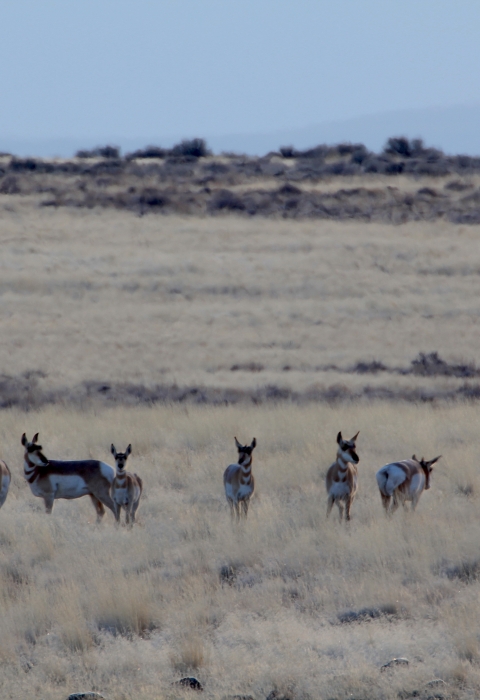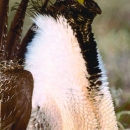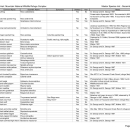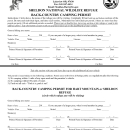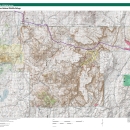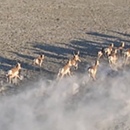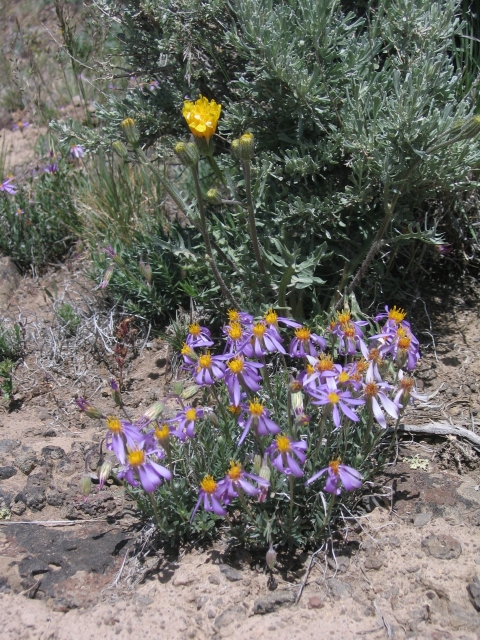Visit Us
National wildlife refuges offer us all a chance to unplug from the stresses of daily life and reconnect with our natural surroundings.
Sheldon National Wildlife Refuge is vast, rugged, and punctuated with scenic treasures. Narrow gorges and lush springs lay hidden among the rimrock table lands and rolling hills of sagebrush sagebrush
The western United States’ sagebrush country encompasses over 175 million acres of public and private lands. The sagebrush landscape provides many benefits to our rural economies and communities, and it serves as crucial habitat for a diversity of wildlife, including the iconic greater sage-grouse and over 350 other species.
Learn more about sagebrush and mountain mahogany.
The remains of old homesteads and ranches intrigue visitors, fire opals draw minors and rock collectors, and geothermal warm springs piped into a pool at Virgin Valley create a refreshing oasis.
As you gaze around the arid and rugged landscape of Sheldon National Wildlife Refuge, it is difficult to imagine Native Americans living a life of relative comfort here. But ten thousand years ago, lakes, marshes, creeks and large springs were abundant, providing ideal sites for villages. The Agai Panina Ticutta band from Summit Lake, the Kidutokado band from Surprise Valley, and the Tsoso’odo tuviwarai band from Oregon all used the area.
Highway 140 runs through the Refuge on the north, making Sheldon a great stop for people who are traveling and need to take a break, or a peaceful day or overnight destination to reconnect with nature.
The Refuge is free to visit. Vault toilets are available in the campgrounds.
Activities
The refuge has many activities for visitors to enjoy. To learn more about what is available, pick up a refuge brochure (these are available on our website, at the Refuge headquarters building, or by request).
Related Documents
Other Facilities in the Complex
Sheldon National Wildlife Refuge is part of the Sheldon-Hart Mountain National Wildlife Refuge Complex. You may also be interested in visiting the Hart Mountain National Antelope Refuge in Oregon!
A National Wildlife Refuge Complex is an administrative grouping of two or more refuges, wildlife management areas or other refuge conservation areas that are primarily managed from a central office location. Refuges are grouped into a complex structure structure
Something temporarily or permanently constructed, built, or placed; and constructed of natural or manufactured parts including, but not limited to, a building, shed, cabin, porch, bridge, walkway, stair steps, sign, landing, platform, dock, rack, fence, telecommunication device, antennae, fish cleaning table, satellite dish/mount, or well head.
Learn more about structure because they occur in a similar ecological region, such as a watershed or specific habitat type, and have a related purpose and management needs. Typically, a project leader or complex manager oversees the general management of all refuges within the complex and refuge managers are responsible for operations at specific refuges. Supporting staff, composed of administrative, law enforcement, refuge manager, biological, fire, visitor services, and maintenance professionals, are centrally located and support all refuges within the complex.
Rules and Policies
All public use recreational activities on Sheldon National Wildlife Refuge are regulated to protect wildlife, this differs from regulations on other public lands. While managed to protect wildlife and maintain the rugged, remote, and undeveloped character of the Refuge, a wide variety of opportunities are available for visitors to experience and explore. As a visitor, it is your responsibility to understand and follow the rules and regulations to protect wildlife and to ensure your own safety. Be safe. Be prepared. Be responsible!
Locations
From Reno (325 miles) via Lakeview, Oregon (best road conditions—paved roads):
1) Follow Highway 395 north for 235 miles to Lakeview, OR (gas, groceries, restaurants, hotels, hardware, vehicle repairs, hospital)
2) Continue following Highway 395 north from Lakeview for 5 miles.
3) Following signs for the Warner Mountain Ski area, Adel and Winnemucca, Nevada, turn east onto Highway 140.
4) Follow Highway 140 east for 85 miles.
5) Follow signs for Sheldon National Wildlife Refuge Dufurrena Field Station, turning south onto Virgin Valley Road.
Alternate Route From Reno (224.5 miles) via Alturas and Cedarville, California (paved and graded gravel roads—NOT MAINTAINED IN WINTER):
1) Follow Highway 395 north for 181 miles to Alturas, CA (gas, groceries, restaurants, hotels, hardware, and vehicle repairs).
2) Continue following Highway 395 north from Alturas for six miles to the junction with Highway 299.
3) Following signs for Cedarville, turn east on Highway 299
4) Follow Highway 299 east for 16.5 miles.
5) Continue east through Cedarville (gas, restaurant, grocery, hotels, towing service, health clinic) on Highway 299 (becoming Nevada Route 8A- graded gravel road NOT MAINTAINED IN WINTER).
6) Follow Highway 299/ Road 8A for 21 miles to Road 8A and Road 34 Junction and signs for SHELDON WILDLIFE REFUGE. From this point you have two options to access the Refuge.
Option A: Follow Road 8A east from junction for 18 miles to Refuge southwest entrance
OR Option B: Follow Road 34 north from road junction for 22.7 miles to Refuge west entrance.
From Winnemucca (124 miles) via Denio Junction, Nevada (28 miles):
1) Follow signs for Melarkey Street, Highway 95, and Veterans Memorial Highway.
2) Follow Highway 95 north for 31.5 miles.
3) Follow Following signs for Denio, turn west onto Highway 140.
4) Follow Highway 140 west for 65.5 miles, past Leonard Creek Rest Area (30 miles) to Denio (groceries, restaurant, hotel)
5) At Denio turn west and continue on Highway 140 for 25 miles.
6) Follow signs for Sheldon National Wildlife Refuge Dufurrena Field Station, turning south onto Virgin Valley Road.
7) Follow Virgin Valley road 1 mile to the Refuge Headquarters 8) Continue 1.5 miles to the Virgin Valley Campground.
